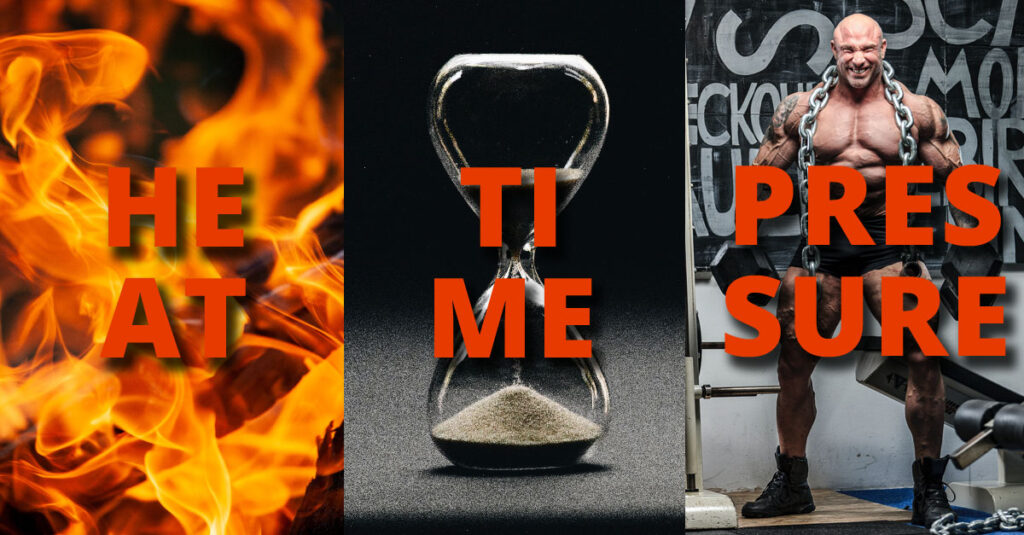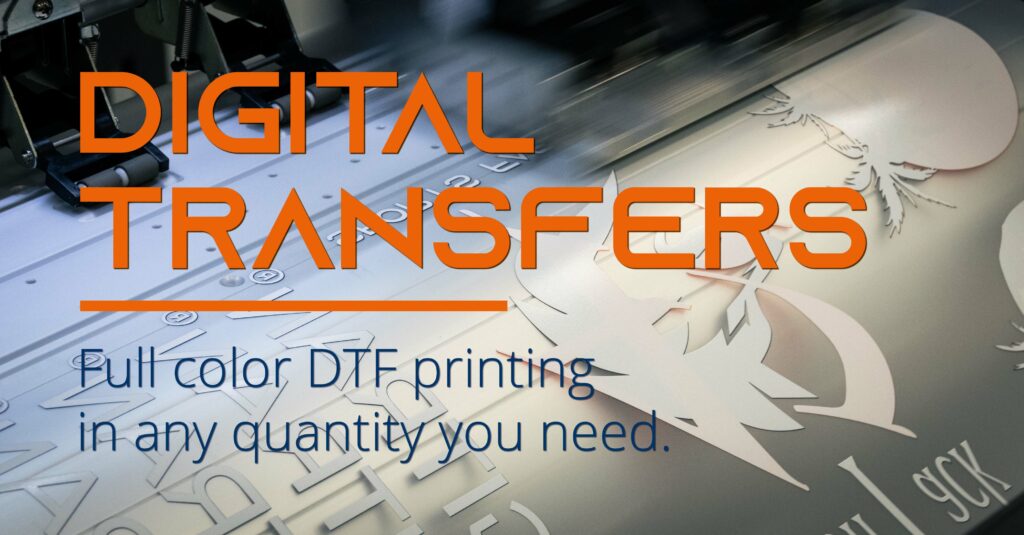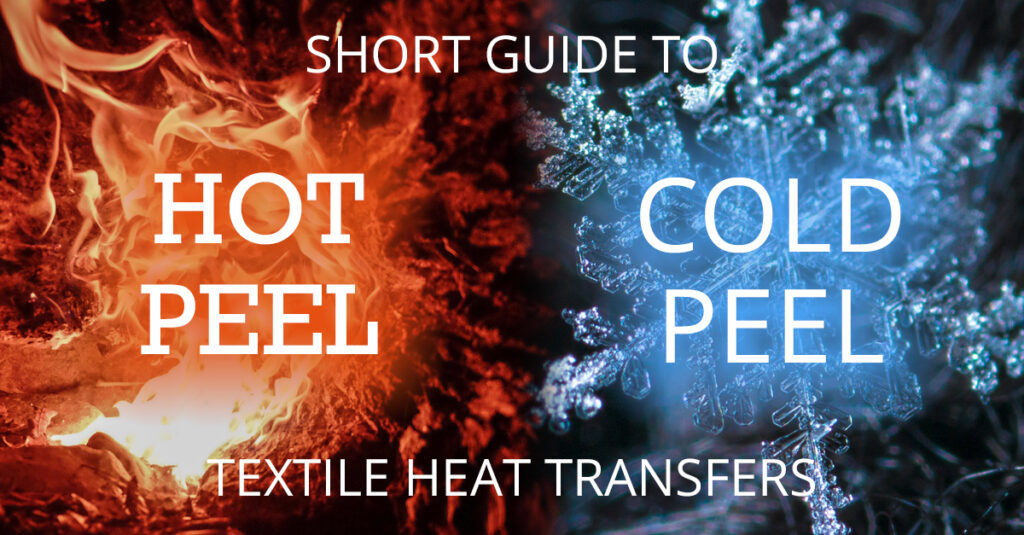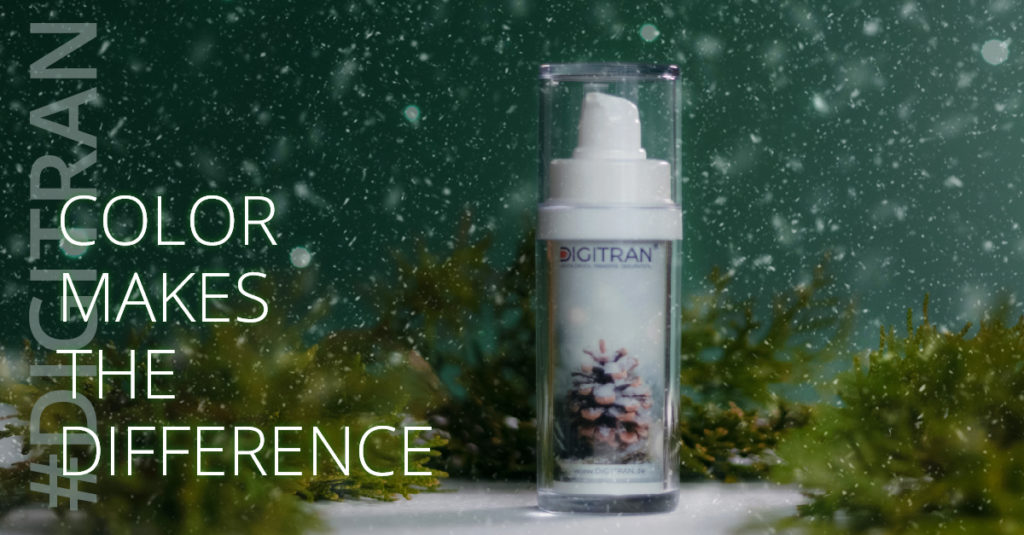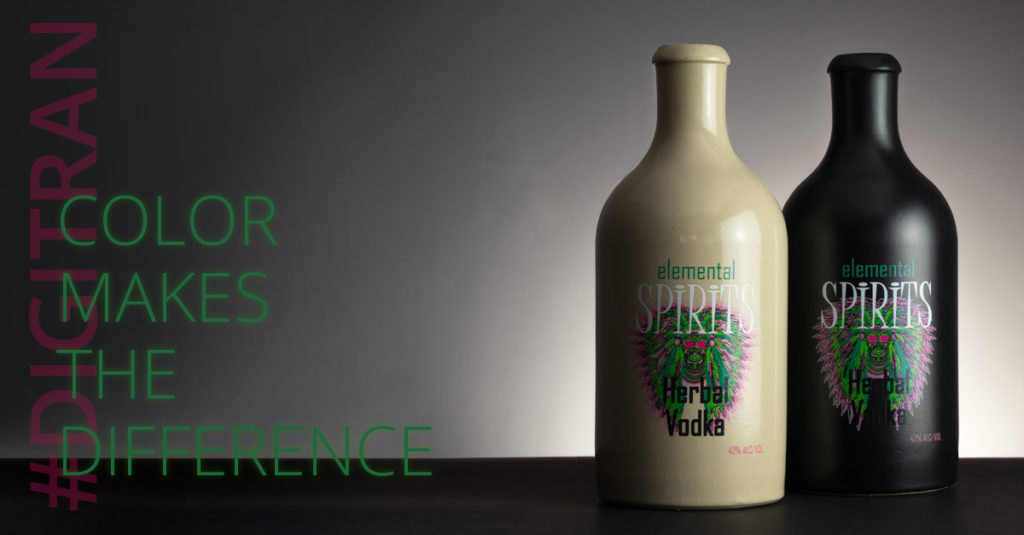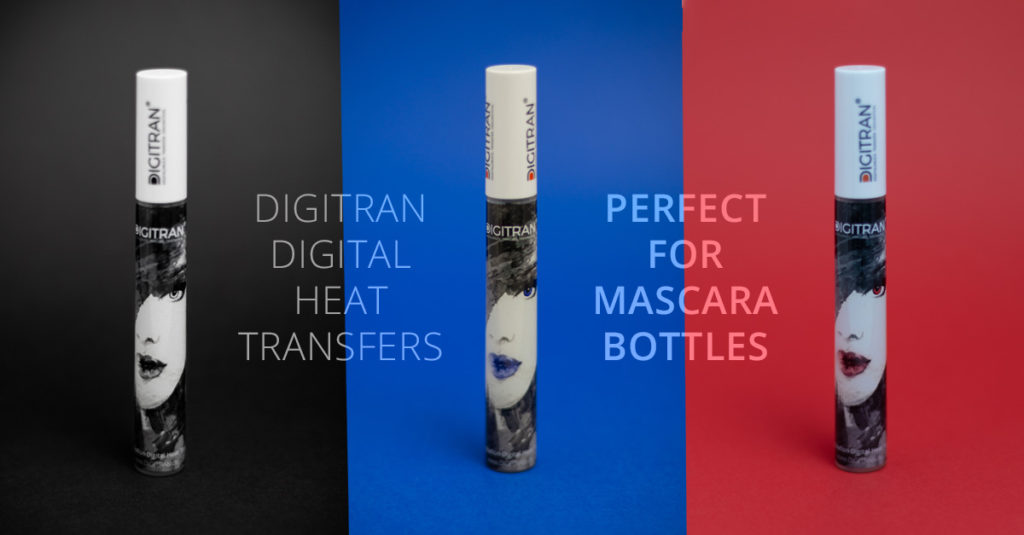Besides many other factors that can influence the heat transfer process, the three most important ones are heat, time, and pressure.
No matter if it is a textile transfer or a transfer for packaging applications, you should know about the effect of these parameters and how a transfer is affected by them. Moreover, it is just as important how these three interact and what this means for the final transfer result.
The first and most important one is heat.
A transfer is non-adhesive at ambient temperatures, but it gets sticky when heated up. But what happens with the transfer when heated up?
The inks and adhesive materials that make the transfer stick are thermoplastics. These plastics are solid at ambient temperatures but turn into a liquid state when heated up. Adding further temperature beyond the melting point would most probably lead to decomposition, oxidation, or other significant changes of the material itself.
But this change from solid to liquid does not happen within a 1°C temperature change. Moreover, it is a process were the material goes from solid to rubbery state and finally to liquid. Another key point is that the middle range even got its own name, the “rubbery plateau”. This name comes from an effect, where the speed in which the viscosity or “fluidity” changes is slowed down over a range of a few degrees. And during this period the material has a rubber like consistency.
Viscosity changes over Temperature
The temperature range where the rubbery plateau is and for how many degrees it exists depends on the materials used. Some systems show it at around 80°C others at 130°C or even more.
Summed up, with heat we can control how “fluid” the transfer shall become. With less heat making it more rubber like and more heat turning it into a liquid.
The second parameter to adjust is the pressure.
As we learned before, with heat we can make our transfer become sticky due to “melting” it. But how liquid do you want it to be and how much heat can your t-shirt, cosmetic tube or pen take? Most plastics show a similar melting process as our transfer does, which means that too much heat will simply destroy the product. If this is the case, there is a limit to how much heat you can apply. This is when pressure comes into play.
With the transfer is melted to a degree where it is “rubbery” it can be compared to a self-adhesive tape like scotch or Tesa tape. To understand the effect of pressure, take a piece of tape and place it very carefully on a piece of paper (not pressing it on!). Can you blow it off? The answer is yes! Now push it against the same piece of paper. Can you still blow it off? No!
This is the result of pressure. As the transfer is in a soft, rubbery state it can somewhat flow and wet a surface. But as it is not a liquid it needs some pressure to force it into this behavior. In other words, if you cannot apply the heat you want to apply due to a heat sensitive product you can overcome this issue with more pressure.
Wetting behavior of a liquid on a solid surface
“Wetting is the ability of a liquid to maintain contact with a solid surface, resulting from intermolecular interactions when the two are brought together.„
To get to a similar result you can compensate missing heat by higher pressure. Accordingly, a pressure sensitive product can be printed by applying more heat.
The last and final value is the time.
By time the dwell time is meant, during which the heat and pressure do their work on the transfer. This value is most important for production speed. The less time it takes to apply a transfer, the more output per time can be generated.
So, the big question is how much time is needed to apply a transfer properly. The theoretical answer is: “When the transfer has wetted the surface to a sufficient degree.” And just as heat and pressure are connected to each other, dwell time is, too.
Dwell time vs. heat
The more energy in form of heat you apply to the transfer, the faster it will reach its desired transfer temperature. A heat press with a powerful heating plate or a preheated product will reduce your dwell time, simply due to a faster increase in the transfer’s temperature.
Dwell time vs. pressure (and heat)
Dwell time and pressure work in a way that is a little more complicated and which correlates with heat also. Let us assume we have a product that is heat sensitive, so we cannot crank up the heat. If this case, we would simply crank up the pressure and force the rubbery adhesive to wet the product. Well, the product we imagine is also thin walled making it sensitive to pressure.
As we cannot push it against the surface to make it wet, we must give it more time to achieve a wetting by itself. In this case you can imagine the transfers behavior similar to a very dense dough that slowly spreads on the parchment paper. This is what the transfer would do on the products surface.
All in all, this means that dwell time is the last tool to fool with when you have reached your limits of heat and pressure.
So, the one thing that you should keep in mind is that you can compensate each one of these three with the other two and vice versa.
Click this button to get in touch with us for a personal consultation. To make sure that your products can benefit from this unique, clean and digital printing technology as soon as possible.
Further Posts
The solution for custom designs on t-shirts, hoodies, bags, sportswear and workwear: DTF Digital Transfers.
Thanks to the combination of digital printing and heat transfer technology, textile transfers can be printed in small quantities, full-color and in the shortest possible time. Thus, the outstanding opacity and feel known from plastisol and screen printed transfers is now also available in small quantities.
Textile heat transfers come in three technologies when it comes to peeling. This can be “hot peel”, “cold peel” or “hot split”. But what is the difference between them?
Airless dispensers are up and coming, just like our digital printing solutions for them.
For mandrel carried products such as airless dispensers, shells, or cosmetic tubes, #DIGITRAN offers a range of digital heat transfer printing solutions. Read on to know which these are:
Ceramic bottles are perfect to give your spirits a unique look.
Not only do they look different than all those glass bottles, but they will also protect your drink from sunlight!
Furthermore, you don’t need a primer, curing, or drying. Once the image is applied the bottle you can be fill or pack and ship it right away.
As heat transfer technology in general is well established for printing mascara bottles, the digital version by DIGITRAN makes it even better!
Here are 7 reasons why:

